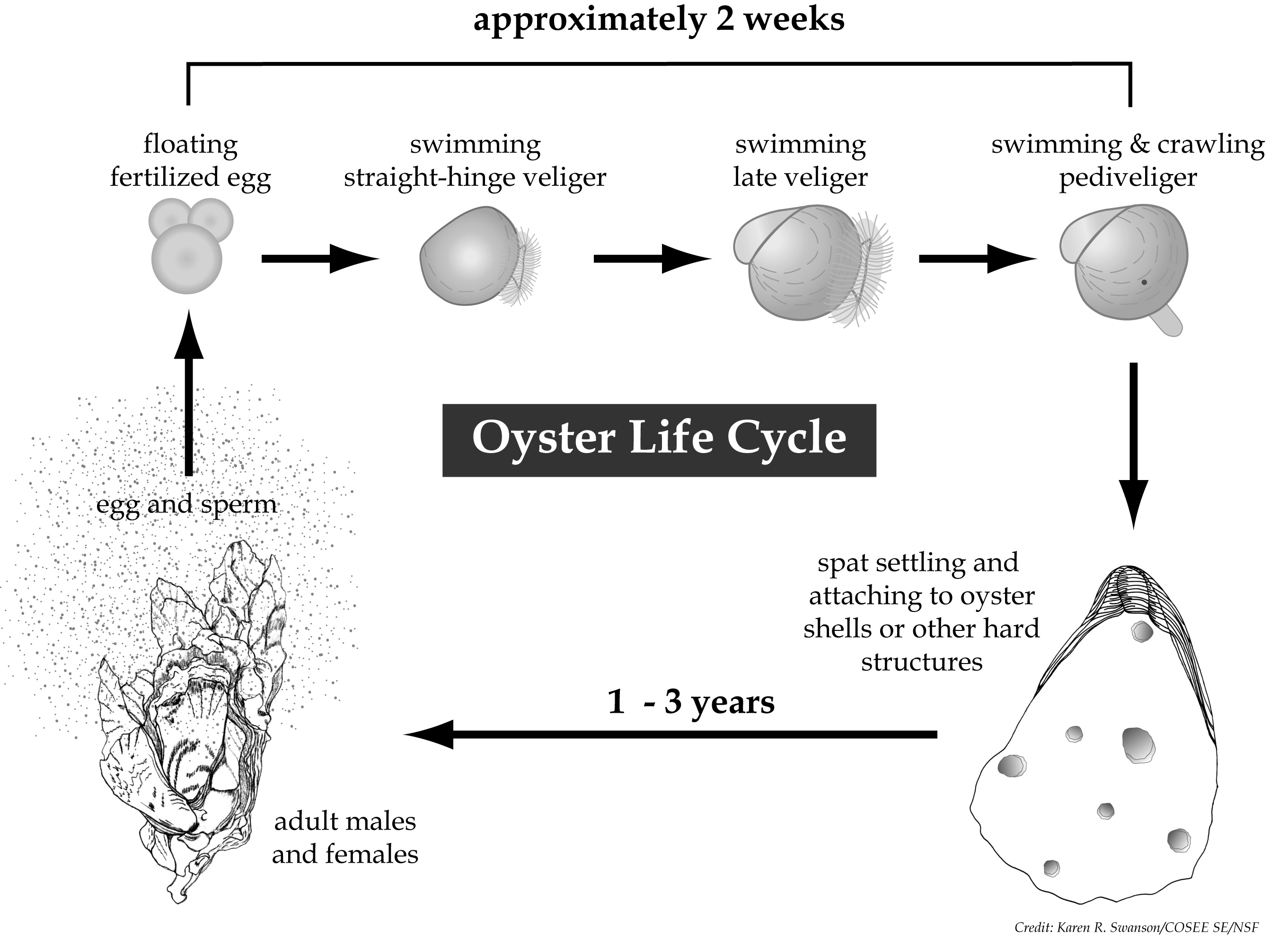Oyster Biology & Ecology (cont)
Life Cycle
Adult oysters begin reproduction when water temperatures become greater than 68F (~20C). In South Carolina this generally occurs from May through October. Oysters are broadcast spawners, meaning they release eggs and sperm into the water column. A fertilized egg develops into a planktonic (free-swimming) trochophore larva in about 6 hours. A fully shelled veliger larva is formed within 12 to 24 hours. The larva remains planktonic for about three weeks. Towards the end of this period it develops a foot (hence, pediveliger) and settles to the bottom of the water column where it seeks a hard substrate. When a suitable surface (ideally adult oyster shell) is located, the larva cements itself and metamorphoses to the adult form. This newly attached oyster is known as a "spat."

Reef Ecology
Oysters are the building blocks of one of the most important benthic communities in South Carolina estuaries, the oyster reef. Formed as a result of years of oyster production and settlement in concentrated areas, reefs have become home to a complex assemblage of animals and plants. Benefits of oyster reefs to the coastal environment include the following:
- Providing solid structure within the water column for sessile (permanently attached or fixed) organisms (for example, barnacles and sea anemones)
- Creating homes and hiding places for organisms seeking refuge from predation (for example, polychaete worms and soft-shell blue crabs)
- Providing spawning substrate for fishes (for example, gobies, blennies, and skilletfish)
- Stabilizing bottom sediments for benthic organisms (for example, hard clams) and aquatic plants
- Concentrating prey (food) species for larger predator fishes (for example, striped bass)
- Serving as breakwaters to protect adjacent shorelines from erosion
- Filtration and clarification of water
Some of the information in this section is modified from Oysters in the Environment found at www.mdsg.umd.edu.